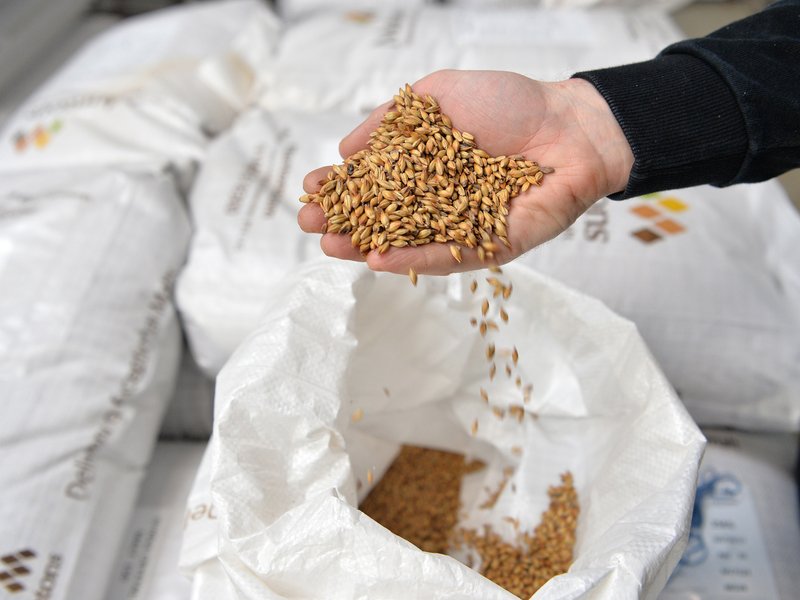
All about malting
Posted by Wold Top Brewery on
If you don't subscribe to our monthly newsletter*, you will have missed the great article that directors Kate and Alex wrote about the malting process.
What is Malting?
Malting is a controlled germination that converts raw grain into malt. Malt is mainly used for brewing or whisky making, but can also be used to make malt vinegar or malt extract.
Various grains are used for malting; the most common are barley, sorghum, wheat and rye.
Process:
The grain is received at the maltings from the farmer. It is taken in from the field and cleaned (dressed) and dried if necessary to ensure the grain remains in the best condition to produce good malt.
The barley is tested to check for suitability for malting and to prevent dead or unfit barley from entering the process. Some of the typical quality checks include:
Grain moisture
Nitrogen content (total nitrogen)
% of foreign matter
Absence of fungal growth and metabolites
Germinative capacity and germinative energy
Water sensitivity
Drying
Barley received at the maltings with moisture of more than 13% must be dried before it can be safely stored without loss of germinative capacity (GC). High temperatures or over-drying will damage or kill the barley embryos and the grain will not germinate after steeping. The dry barley can safely be stored for up to 18 months without fungal growth or loss of grain vigour.
Cleaning
The aim of barley cleaning is to remove foreign matter (straw, chaff, dust and thin corns) found in the incoming grain, leaving only the grain most likely to produce a good malt. At the end of the cleaning process the grain is weighed to determine the cleaning losses (the difference between the weight of grain received and the weight of the grain after cleaning) and it is transferred to a silo for storage
Steeping
Steeping is the start of the active malting process whereby water is added to cover the grain and the grain moisture content increases from around 12% to between 40 and 45%. In a modern pneumatic malt house, the grain is alternatively submerged (wet stand) and then drained (an air rest) for two or three cycles to achieve the target grain moisture content and chit count.
When the grain is immersed in water, air is bubbled through the slurry of water and grain periodically. The aim of this aeration is to keep the process aerobic to maximize barley growth.
At the end of the wet stand the water is drained out and this is the start of the air rest. During the air rest, fans are run to supply fresh oxygen and to remove excess CO2 produced by grain respiration.
Germination
The aim of germination is to grow the barley grains. This allows the development of malt enzymes, and these enzymes modify the structure of the barley endosperm by breaking down the cell walls and the protein matrix.
The enzymes produced during germination are needed to break down the starch for the brewer or distiller during the mashing process.
The grain bed is maintained at a constant temperature of between 10 and 16 °C by a constant supply of fresh humidified air and turners move through the grain bed to keep it loose to allow for sufficient air-flow.
Kilning
Kilning reduces the grain moisture content and stops the germination process. In the first stage, air temperatures are kept cool to dry the grain without causing the enzymes to denature.
As the grain dries it is possible to raise the air temperature, to further dry the grain, the target malt moisture after kilning is around 5% by weight.
During the last few hours of kilning the air on temperature is raised to above 80 °C (the curing stage) to break SMM (S-methyl methionine) down to DMS (Dimethyl Sulfides) to reduce the DMS potential of the malt. DMS is an off flavour that tastes like sweetcorn in the final beer.
The high temperatures of kilning also produce the colour in the malt, from pale ale (lightly toasted) to dark crystal (very dark, high roasted grains).
*If you don't want to keep missing out on pearls of brewing wisdom like this, you can sign up to our newsletter here http://bit.ly/2Mpz4cU
Share this post
- Tags: News
